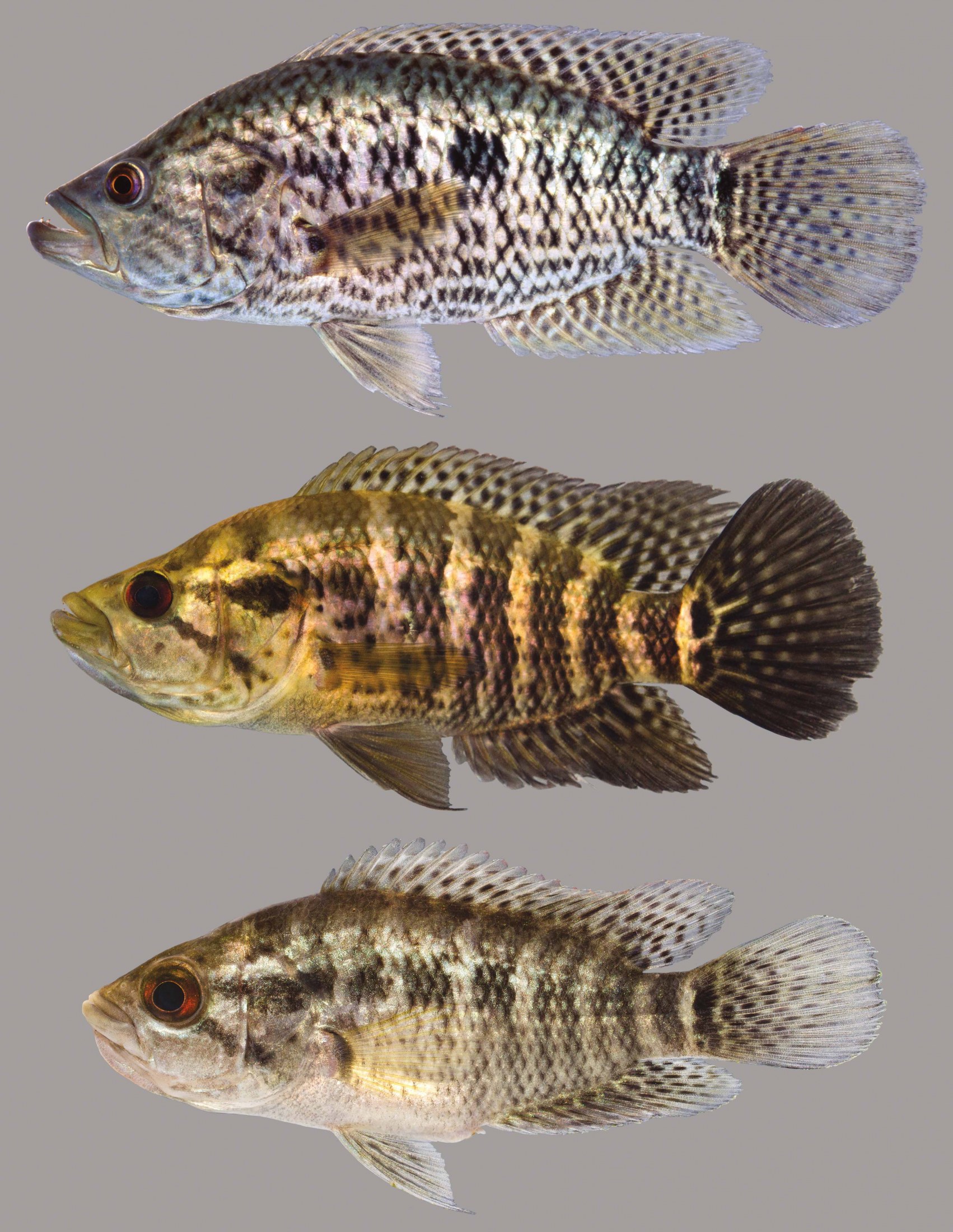Parachromis managuensis
(Günther 1867)
Family Cichlidae

The jaguar guapote is a member of the cichlid and tilapia family. It has a semi-elongate and compressed body, and a large oblique mouth. This species has a slightly concave dorsal head profile. The head is often yellow to olive-green, and the body is cream-yellow to gray. The head and body are covered with many black spots and streaks, and a pair of broken or complete black streaks extends from the eye to or nearly to the upper and lower gill cover edge. Large fish may take on a silver or blue-green luster with purple highlights on the body or the fins. The pectoral fin is dusky yellow, and all other fins are gray to black and heavily patterned in black. There are between seven and nine anal spines and a rounded caudal fin. The jaguar guapote can be found in roadside ditches, canals, wet prairies, creeks and lakes.
Status & distribution
- Status — Non-indigenous freshwater
- Florida Distribution — Peninsula drainages
- River Drainages — Tampa Bay and the Everglades